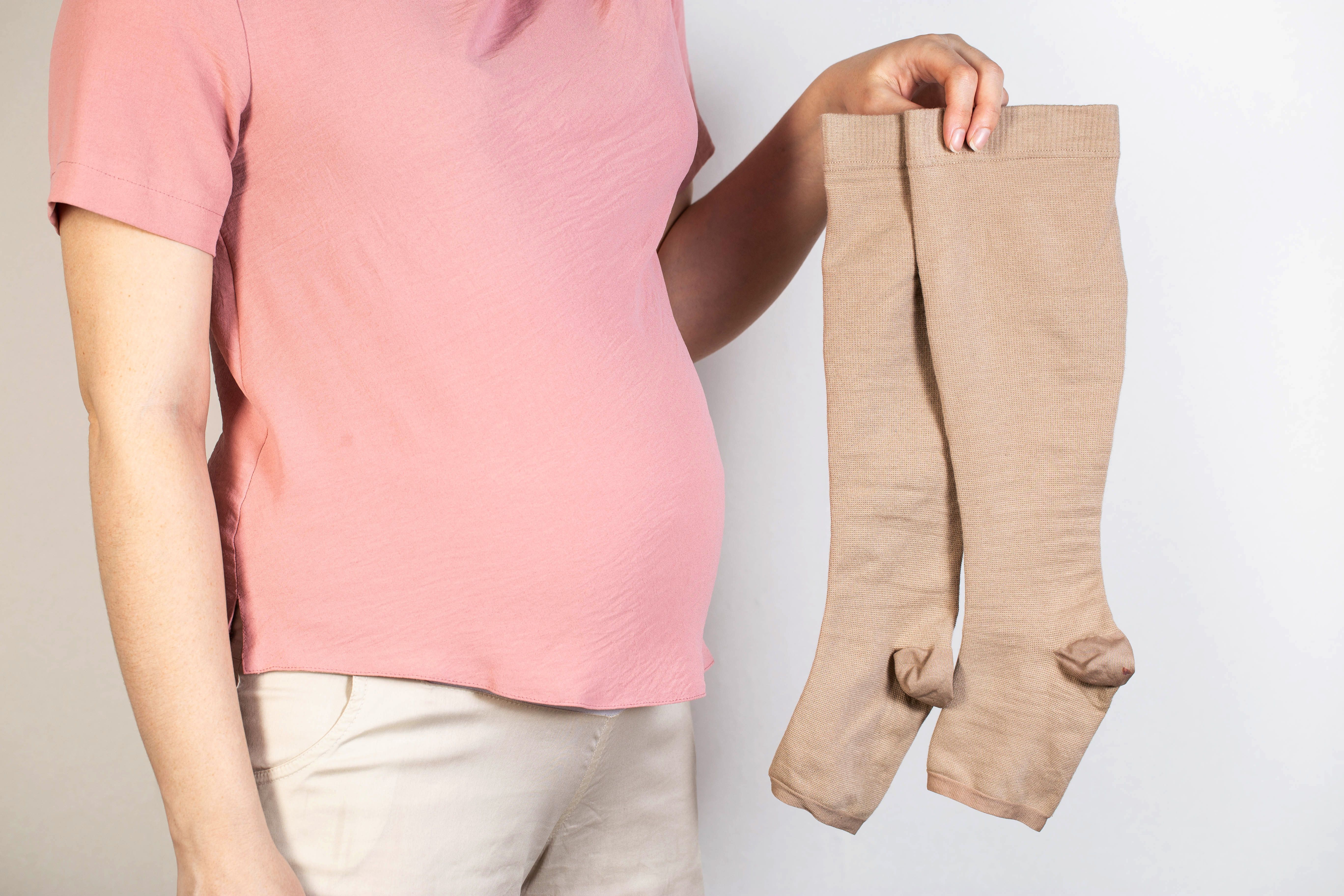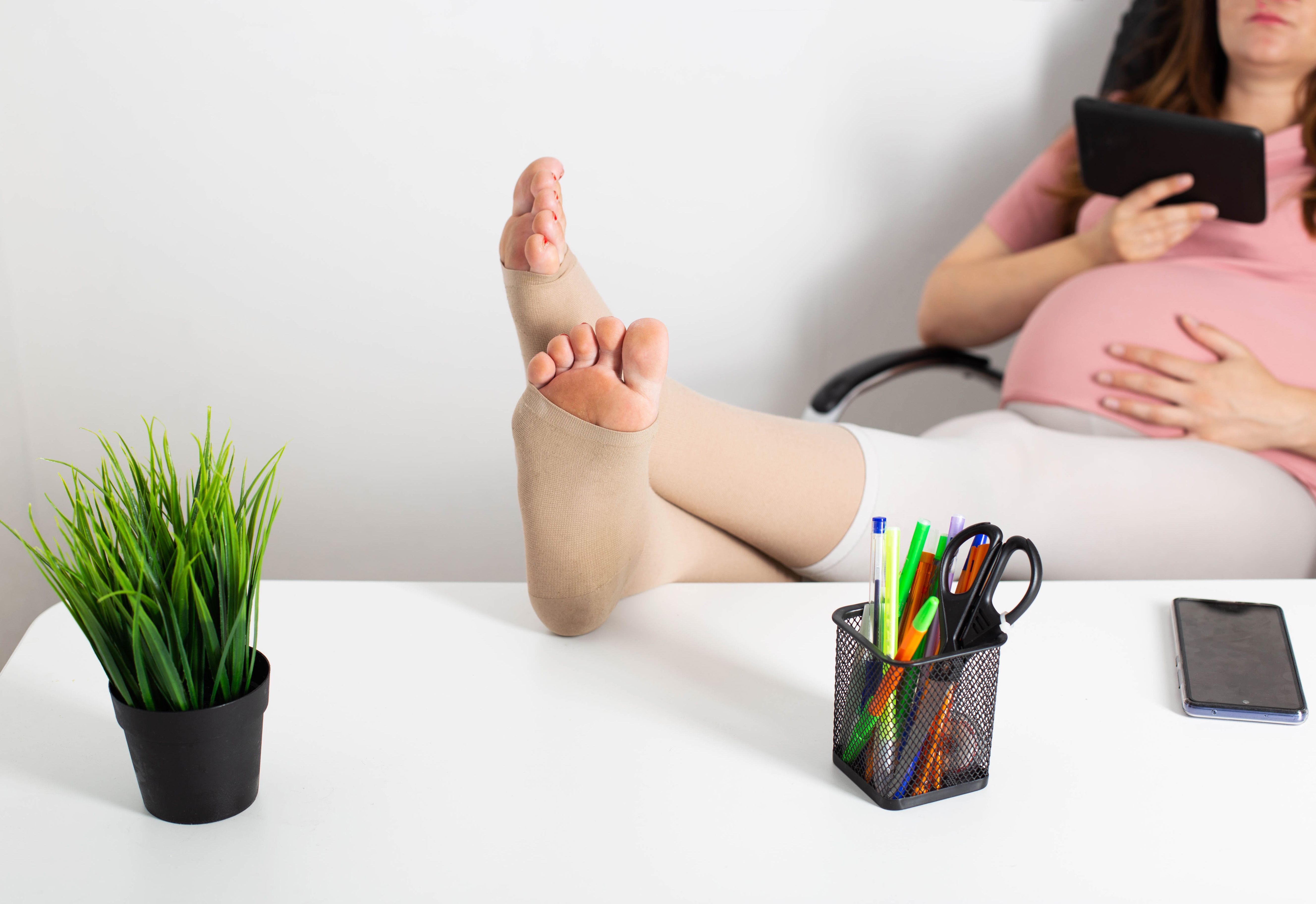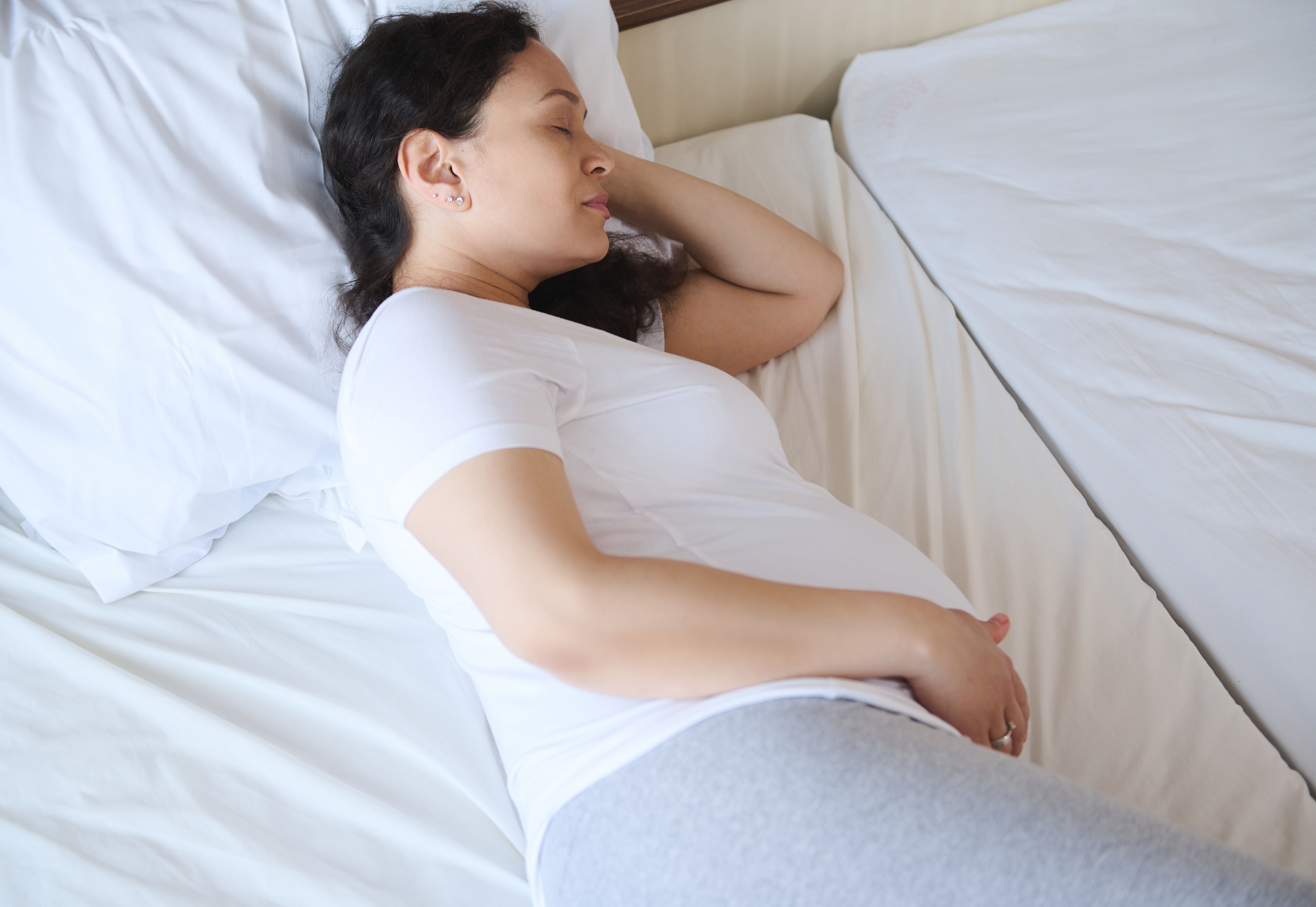Varicose Veins
Signs & Symptoms of Chronic Venous Disease
Prevention of Chronic Venous Disease
3/27/2025
Caring for Your Veins: Pregnancy Tips for Venous Disease
Overview
- During pregnancy, venous disease can cause discomfort and swelling due to poor blood circulation in the legs.
- To alleviate symptoms, methods like wearing compression stockings, elevating your legs, regular low-impact exercise, and maintaining a healthy weight can help improve circulation and reduce swelling.
- Medications like Diosmin + Hesperidin (Daflon® 1000) can support your vein health.
Introduction
Your body undergoes many changes during pregnancy, and alongside the joy of welcoming a new life, some physical challenges come with it. One common issue many pregnant women face is venous disease, a condition where the veins in the legs struggle to efficiently return blood to the heart, causing blood to pool in the veins1.
This can result in discomfort, swelling, and even the appearance of varicose veins. While it may be uncomfortable, there are several ways to alleviate symptoms of venous disease during pregnancy, and taking early action can help you feel better and prevent complications2.
One of the treatments that can support you through this phase is Diosmin + Hesperidin (Daflon® 1000), an oral medication that can provide additional relief, as it helps strengthen vein walls, reduce inflammation, and improve circulation.
Let's explore some of these methods to help you feel more comfortable as you navigate your pregnancy while caring for your body.

Wear Compression Stockings
These stockings are designed to gently squeeze the legs, encouraging better blood flow and preventing blood from pooling in the veins. They are particularly helpful during pregnancy, as the growing uterus increases pressure on the veins in the lower body, making pregnant women more prone to varicose veins and leg swelling3.
The good news is that maternity compression stockings are available, specifically designed to accommodate a growing belly while providing targeted support for the legs and ankles4.
To get the most out of compression stockings, it's important to wear them consistently. You can put them on first thing in the morning before swelling begins and wear them throughout the day. You can remove them before going to bed, as lying down reduces the pressure on your veins naturally5.

Elevate Your Legs
When you raise your legs above the level of your heart, gravity helps improve blood circulation and prevents blood from pooling in your lower limbs. This reduces pressure on your veins and provides relief from the strain caused by your growing belly6.
To do this, you can prop your legs up on pillows while lying on the bed or couch. Given your growing belly, finding a comfortable position is important. You can try lying on your left side with your legs propped up, as this position reduces pressure on the major blood vessels in your abdomen and improves circulation.
If you’re sitting, you can use a stool, an ottoman, or even a stack of cushions to keep your legs elevated. Ideally, aim to elevate your legs several times a day, for at least 15-20 minutes per session. Many pregnant moms find it especially helpful to do this after long periods of standing or walking7.

Engage in Regular Low-impact Exercise
Exercising doesn’t mean you have to be drenched in sweat to say you’ve done a good job. For those dealing with venous disease, low-impact exercises like walking around the neighborhood, swimming, and prenatal yoga can work wonders for your circulation and help ease symptoms like swelling and heaviness in your legs. Just make sure to consult your doctor before starting any exercise routine to ensure it's safe for you and your baby8.
The best part about these is that they can be done at your own pace. Aim for 20-30 minutes of activity most days of the week and listen to your body—there’s no need to overdo it. If you feel tired, take breaks and stay hydrated. These exercises don’t just benefit your veins; they also help maintain a healthy weight, improve your energy, and prepare your body for labor.

Maintain a Healthy Weight
Gaining too much weight can put added pressure on your veins, making it harder for blood to flow back to the heart and worsening symptoms like swelling, heaviness, and discomfort in the legs.
To help you manage your weight, focus on eating a balanced diet rich in fruits, vegetables, whole grains, lean proteins, and healthy fats. For example, include nutrient-packed foods like colorful veggies in your meals. These choices provide essential nutrients for your baby’s development and keep your circulation healthy9.
Consider portion control as well. Eating for two doesn’t mean doubling your portions. Stay mindful of your calorie intake and avoid too much salt, which can contribute to water retention and worsen leg swelling. Remember to always consult with your doctor or a nutritionist to ensure you’re following a plan tailored to your pregnancy needs10.

Sleep on Your Left Side
This position helps improve blood flow by reducing pressure on the inferior vena cava, a large vein on the right side of your body that carries blood back to your heart. When you sleep on your left, you ease the strain on this vein, promoting better circulation and reducing swelling, leg discomfort, and the risk of varicose veins11.
It also allows blood and nutrients to flow more efficiently to your baby and your kidneys, which helps reduce water retention and puffiness in your legs and feet12.
For comfort, try placing a pillow between your knees or under your belly for support, there are even maternity pillows designed for this. If you’re used to sleeping on your back or right side, it may take some time to adjust, but the benefits for your circulation and overall pregnancy health are worth the effort.
Key Takeaway
To alleviate symptoms of venous disease during pregnancy, adopting a combination of healthy lifestyle changes and treatments can make a big difference. Consider incorporating Diosmin + Hesperidin (Daflon® 1000) into your routine as well.
Always remember to consult with your healthcare provider before starting any new treatments or exercises to ensure they’re safe for you and your baby. With the right care and support, you can prevent complications and keep both you and your little one healthy throughout this special time13.
REFERENCES
- https://pmc.ncbi.nlm.nih.gov/articles/PMC10301529/
- https://www.phlebolymphology.org/chronic-venous-disease-during-pregnancy/
- https://www.webmd.com/dvt/choose-compression-stockings
- https://www.webmd.com/baby/compression-socks-benefits-during-pregnancy
- https://www.medi.de/en/faq/compression-garments/pregnancy/
- https://www.healthline.com/health/elevating-legs#:~:text=You%20can%20use%20leg%20elevation,legs%20before%20trying%20leg%20elevation.
- https://my.clevelandclinic.org/health/diseases/23331-varicose-veins-in-pregnancy
- https://theveininstitute.com/8-tips-on-alleviating-varicose-vein-discomfort-during-pregnancy/#:~:text=Regular%20exercise%20is%20another%20vital,might%20help%20avoid%20varicose%20veins.
- https://veinreliever.com/5-things-know-pregnancy-varicose-veins/#:~:text=Change%20Your%20Diet,have%20a%20lot%20of%20salt.
- https://www.ukveinclinic.com/blog/5-recipes-to-help-prevent-varicose-veins-during-pregnancy#:~:text=Unfortunately%2C%20the%20majority%20of%20pregnant,to%20manage%20your%20blood%20circulation.&text=Pregnant%20or%20not%2C%20everybody%20craves,so%20take%20that%20second%20helping
- https://www.veinenvy.com/blog/how-to-sleep-with-varicose-veins
- https://www.babycenter.com/pregnancy/your-body/varicose-veins-during-pregnancy_271
- https://www.mintstl.com/blog/7-tips-to-avoid-varicose-veins-during-pregnancy
2025